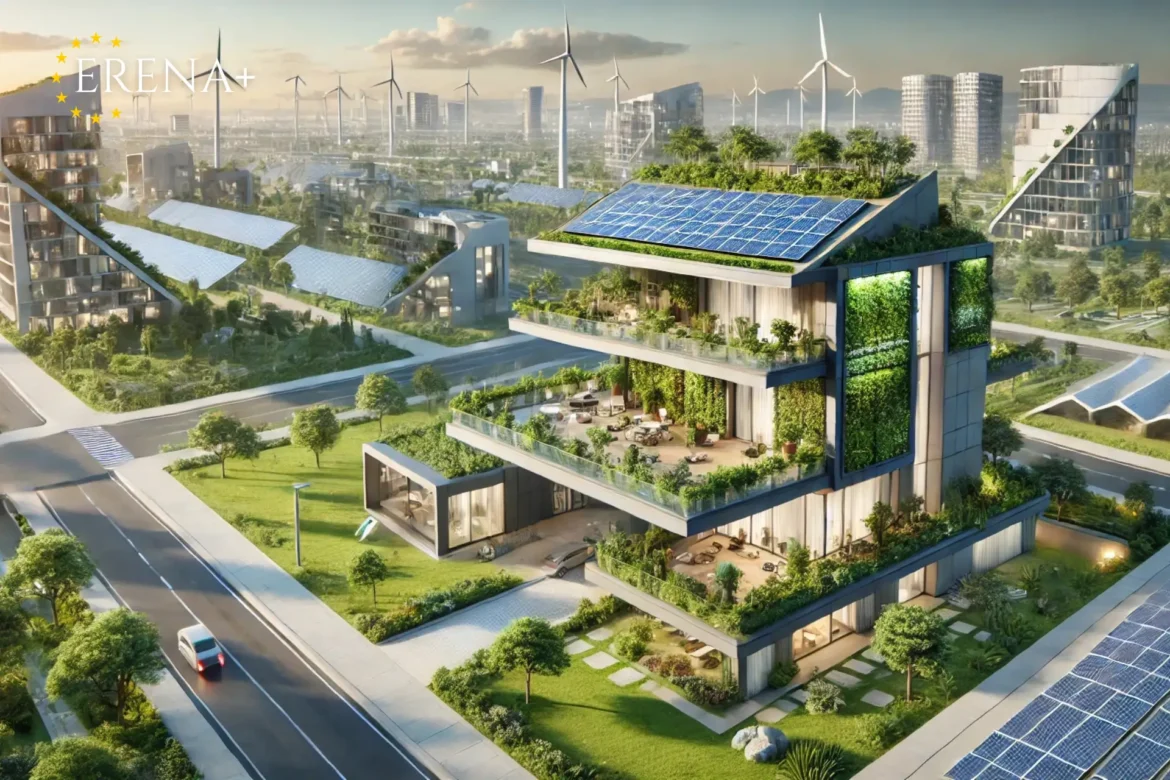846
Modern technologies and environmental challenges are radically reshaping our perception of what homes should be. At the European Real Estate News Agency, we’ve decided to explore what the future holds. How will housing look in 30 years? What innovations and approaches will define the appearance of homes? Let’s dive into this fascinating topic together.
1. Smart Homes: Technologies That Are Already Here
Smart technologies are beginning to infiltrate our homes today, although they are not yet widespread.
•Artificial Intelligence (AI): AI is already implemented in smart speakers and voice assistants like Alexa or Google Assistant, managing lighting, temperature, and even appliances. In the future, AI will become more autonomous and capable of anticipating our needs.
•Internet of Things (IoT): IoT is actively used in smart thermostats, locks, and security systems. By 2050, these devices will not just be add-ons but a standard part of homes.
•Sensor Systems: Smart refrigerators currently track food supplies and suggest recipes, but in the future, their functionality will expand to include automatic delivery.
Example for 2050: A smart home doesn’t just adjust the temperature or turn on the lights; it analyzes your preferences, creating the perfect environment for work and relaxation.
2. Sustainable Construction: What Is Already Being Implemented
Environmental challenges have become a driving force for innovation in construction, and many technologies are already in use.
•Energy Independence: Solar panels on rooftops are becoming increasingly affordable. While they are currently used for partial energy supply, future homes will generate more energy than they consume.
•Vertical Greening: Some cities are experimenting with green façades, such as the Bosco Verticale in Milan. In the future, such solutions will be mandatory for urban buildings.
•Eco-Materials: Biodegradable construction materials like bamboo or recycled plastic are being used in specific projects, but their mass adoption is limited due to costs.
Example for 2050: Your home with solar panels, green walls, and rainwater collection systems becomes fully eco-friendly.
3. Materials of the Future: What Is Already Available
Innovative materials are beginning to emerge on the market and will become commonplace by 2050.
•Self-Healing Concrete: This material is being tested for infrastructure projects like bridges but will be used in residential buildings in the future.
•Photochromic Windows: Glass that changes transparency based on lighting already exists. While still expensive, its widespread adoption is only a matter of time.
•Lightweight and Flexible Materials: Some companies are developing polymers that adapt to temperature and humidity changes.
Example for 2050: Windows automatically darken on a hot day, and cracks in walls “heal” without human intervention.
4. Compact Housing: Solutions for Large Cities
With urbanization on the rise, compact homes are becoming more popular, and some concepts are already being implemented.
•Microhomes: Tiny homes measuring 20–30 square meters are used in Japan and the US. They are ideal for young professionals and frequent movers.
•Modular Structures: Homes assembled like building blocks are increasingly appearing in temporary housing projects. In the future, they will become standard for permanent residences.
•Mobile Homes: Compact, movable homes are already popular among travelers. In the future, they will offer even more adaptability to various conditions.
Example for 2050: Your home can be assembled in a few days and, if needed, disassembled and moved to another city.
5. Smart Health and Safety: What Already Works
The health and safety of residents are becoming priorities, with some solutions already available.
•Air Quality Sensors: These devices measure carbon dioxide levels and pollutants in the home. They are available today but are not yet widely used.
•Antibacterial Coatings: Early versions of materials that destroy viruses appeared during the COVID-19 pandemic. In the future, they will become standard.
•Health Monitoring Systems: Smartwatches and fitness trackers already monitor basic health metrics. In the future, these functions will be integrated into homes for easier health management.
Example for 2050: Your home reminds you to drink water, ventilate the room, and exercise.
6. Homes as Part of the Urban Ecosystem
Urban infrastructures are beginning to adopt approaches that integrate homes into a unified system.
•Energy Networks: Some areas are testing energy systems that redistribute energy between buildings. By 2050, such systems will become the norm.
•Multifunctional Complexes: Projects that combine housing, offices, and recreational areas are already emerging. This trend is growing and will continue to evolve.
Example for 2050: Your home becomes part of a “smart district,” where energy is redistributed among all buildings, and waste is recycled centrally.
Conclusion
Many of the technologies we discuss as future trends are already being implemented in select projects. While they are not yet widespread, their adoption is only a matter of time, driven by technological advancements and changing societal priorities. At the European Real Estate News Agency, we are confident that homes in 2050 will not just be places to live but high-tech, autonomous, and eco-friendly ecosystems.
What do you think? Which technologies impress you today, and which seem like science fiction? Share your thoughts in the comments!
Follow us on social media 📲:
• X (Twitter) • Facebook • Telegram

